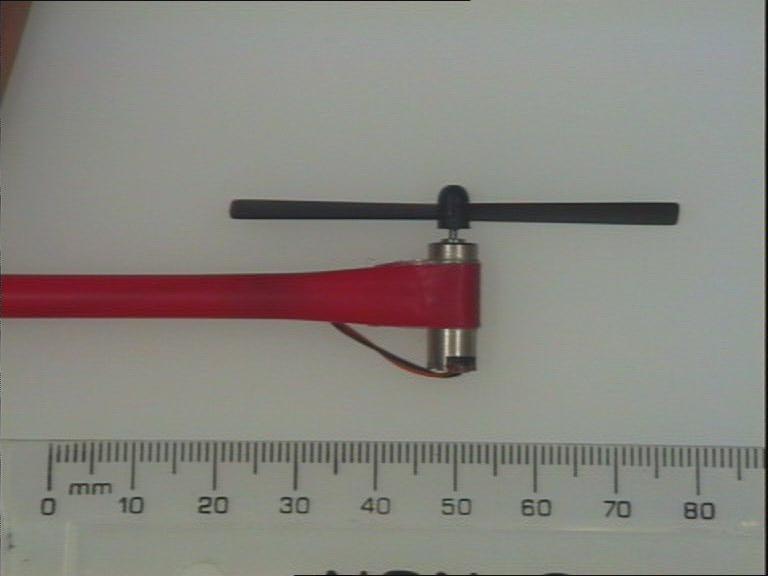| Propulsion System
|
|
|
Thrusting on the blimp is achieved with three small fan units capable of supplying approximately 4g of thrust at full power. Each of these units consists of a small DC electric motor fitted with a small plastic propeller. The motors are the same as those used for vibrating mobile phone batteries and pagers and are very lightweight (2g). The plastic propellers are 5cm in diameter and weigh 0.3g each. Each of the fans is controlled with a full bridge driver (h-bridge) to enable operation in both directions, and pulse-width modulation (PWM) to give digital speed control.
|
|
|
|
|
|
One fan is mounted at each end of an arm to provide forward, reverse and axial rotation of the blimp. The third fan is fitted beneath the gondola to provide movement in the vertical axis. A problem with this vertical axis fan is that it introduces a small torque, causing the blimp to rotate in the opposite direction to the propeller. However, if only used for a short period this torque is negligible compared to movement caused by air currents, and could be overcome by using a gimballed design instead of the third fan unit. Another method would be to use counter- rotating propellers, but this would be quite complex to implement at such a small scale. The arm holding the two thrust fans could then be tilted 90 degrees either way of the horizontal to provide twice the thrust in the vertical axis. This design requires a servomotor to move the arm, which will weigh much more than the single fan unit it replaces. For the simplicity of the design, this study does not employ the gimballed arm. |

